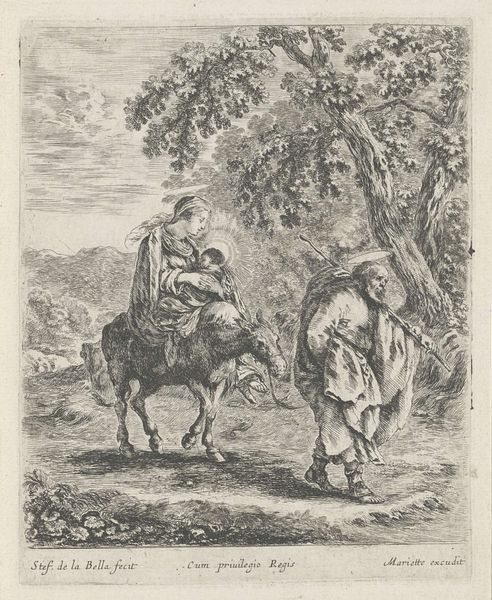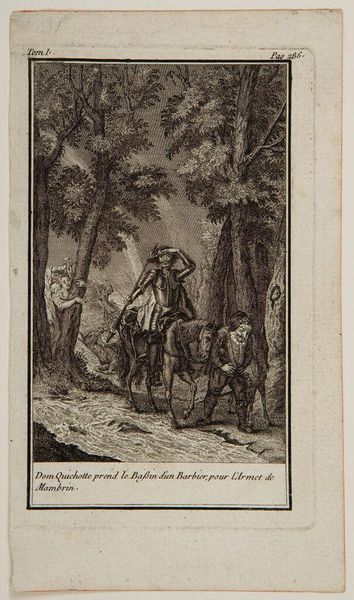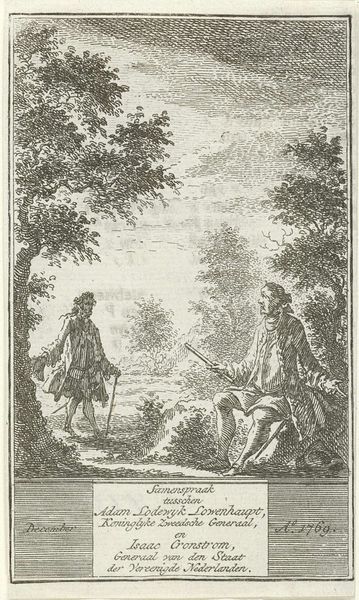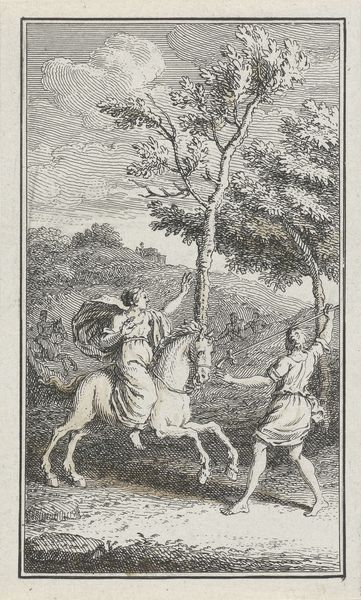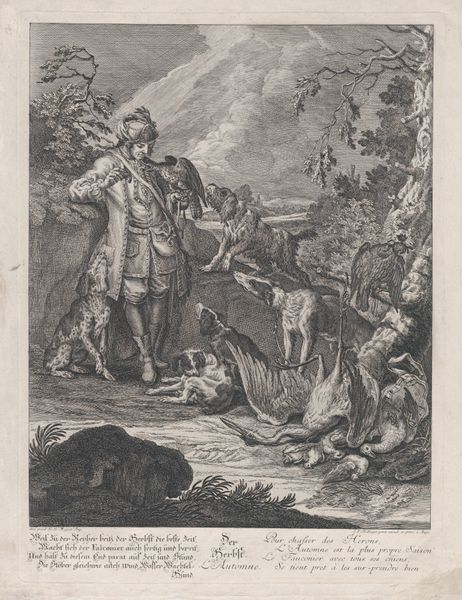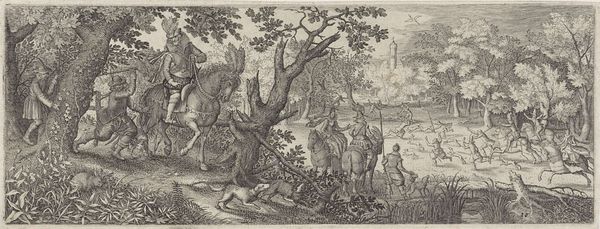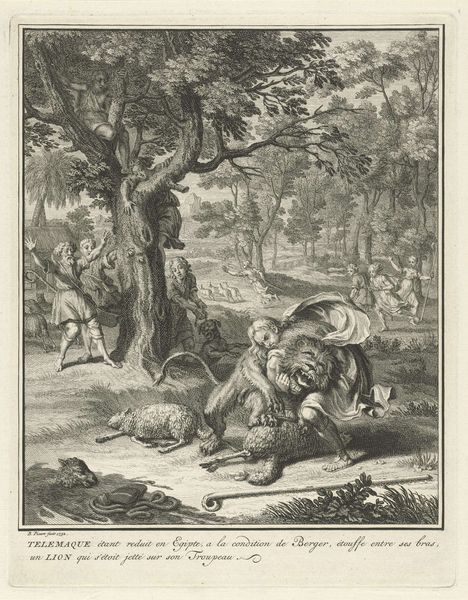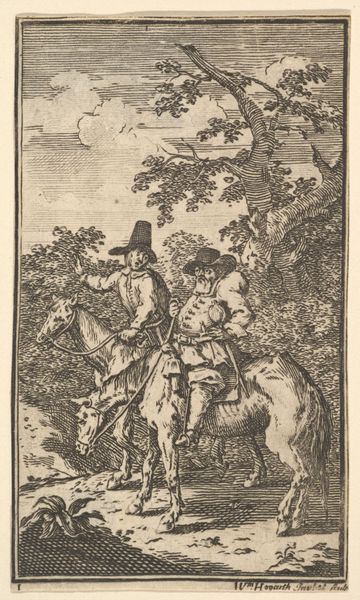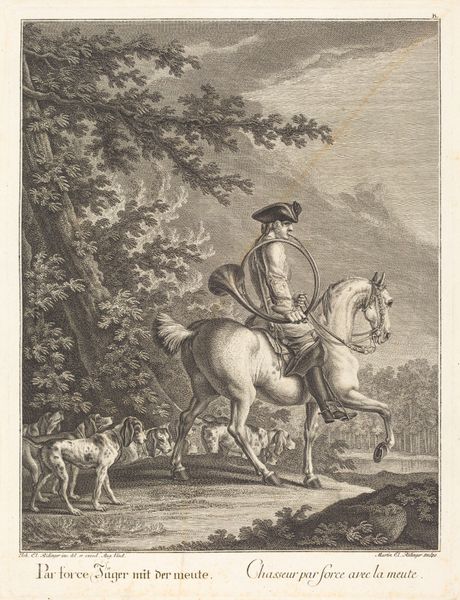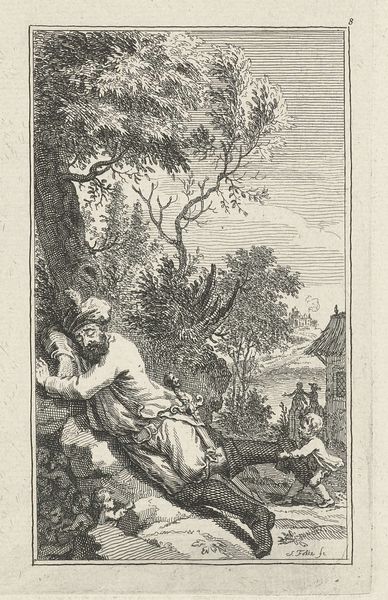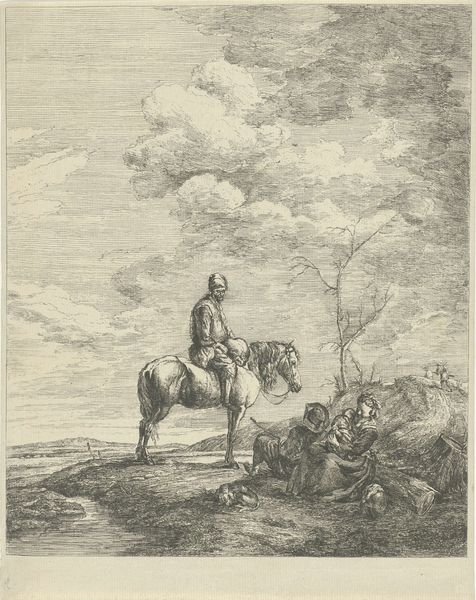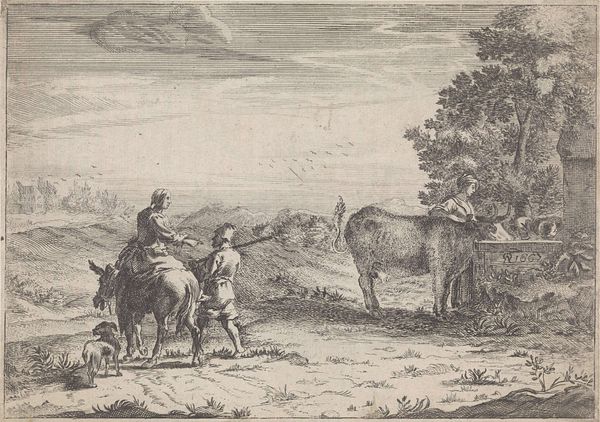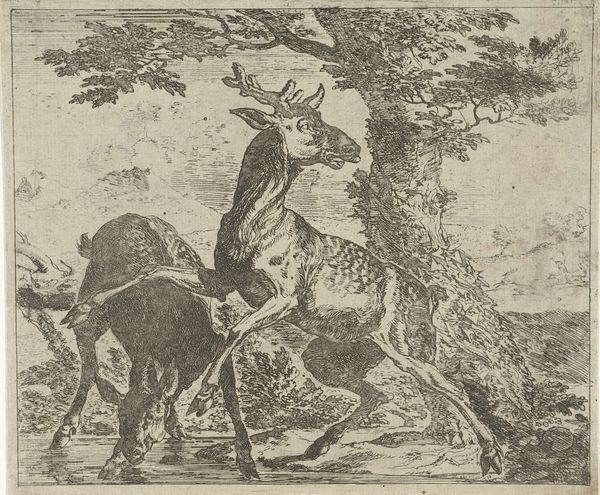
print, engraving
#
narrative-art
#
baroque
# print
#
landscape
#
genre-painting
#
engraving
Dimensions: height 141 mm, width 86 mm
Copyright: Rijks Museum: Open Domain
Curator: This engraving by F.J. Walther, dating back to 1756, is titled "Landschap met een man op een ezel" or "Landscape with a Man on a Donkey." It exemplifies the Baroque style through the detailed lines. What strikes you about it initially? Editor: Immediately, it feels…quaint, I think. Like a scene from a storybook, or perhaps a mildly cautionary tale? The figure on the donkey seems a bit too self-assured for the dangers suggested by the woods and the figure wielding crossed sticks on the left. Curator: It is certainly evocative. This image showcases several Baroque themes through the landscape setting and elements of genre painting. I'm particularly drawn to how Walther utilized the engraving process here, where each carefully incised line contributes to a dense visual texture. The tools used and skills to master define this print’s appeal for circulation. Editor: Yes, the contrast created is so compelling. I almost get lost in the layers – like a waking dream trying to arrange itself. The choice to place the rider so close, but frame the mysterious person on the left more subtly...almost makes it feel theatrical to me. A stage in an adventure. Do you see something symbolic here in relation to book illustration? Curator: Undoubtedly, as this period often saw prints employed for illustrative purposes in books and periodicals, enhancing narrative through visual engagement, especially in the depiction of adventure or genre scenes. Note the specific tools – burins and engraving plates—required skilled labor and contributed meaningfully to craft networks for distributing imagery, popular culture through mass production. Editor: I was stuck thinking more about those human elements— the posture of the donkey, or even what he may symbolize given that this illustration comes from an adventure. I love when something handmade can give that degree of emotive quality. I see in those engravings so much opportunity to expand what illustration or art making could signify about a person's perspective during their experience creating it. Curator: It shows the increasing emphasis on visual culture shaping the narrative, both informing and mirroring society’s values, that existed because artists' means for producing affordable and readily circulated pieces were changing the dynamic. Editor: It gives a feeling that many artistic choices are now possible because those tools are in the artist's arsenal! Looking closely, and understanding its place makes viewing feel all that much more meaningful. Curator: Absolutely, an awareness of the production and dissemination facilitates appreciating historical artworks. I learned much today about that feeling or emotional effect in viewing "Landschap met een man op een ezel”. Editor: Agreed—I have such newfound insight from reflecting deeply about the material culture intertwined in Baroque and even more questions regarding what stories images and items can transmit, particularly across periods that affect our sensibilities nowadays.
Comments
No comments
Be the first to comment and join the conversation on the ultimate creative platform.
